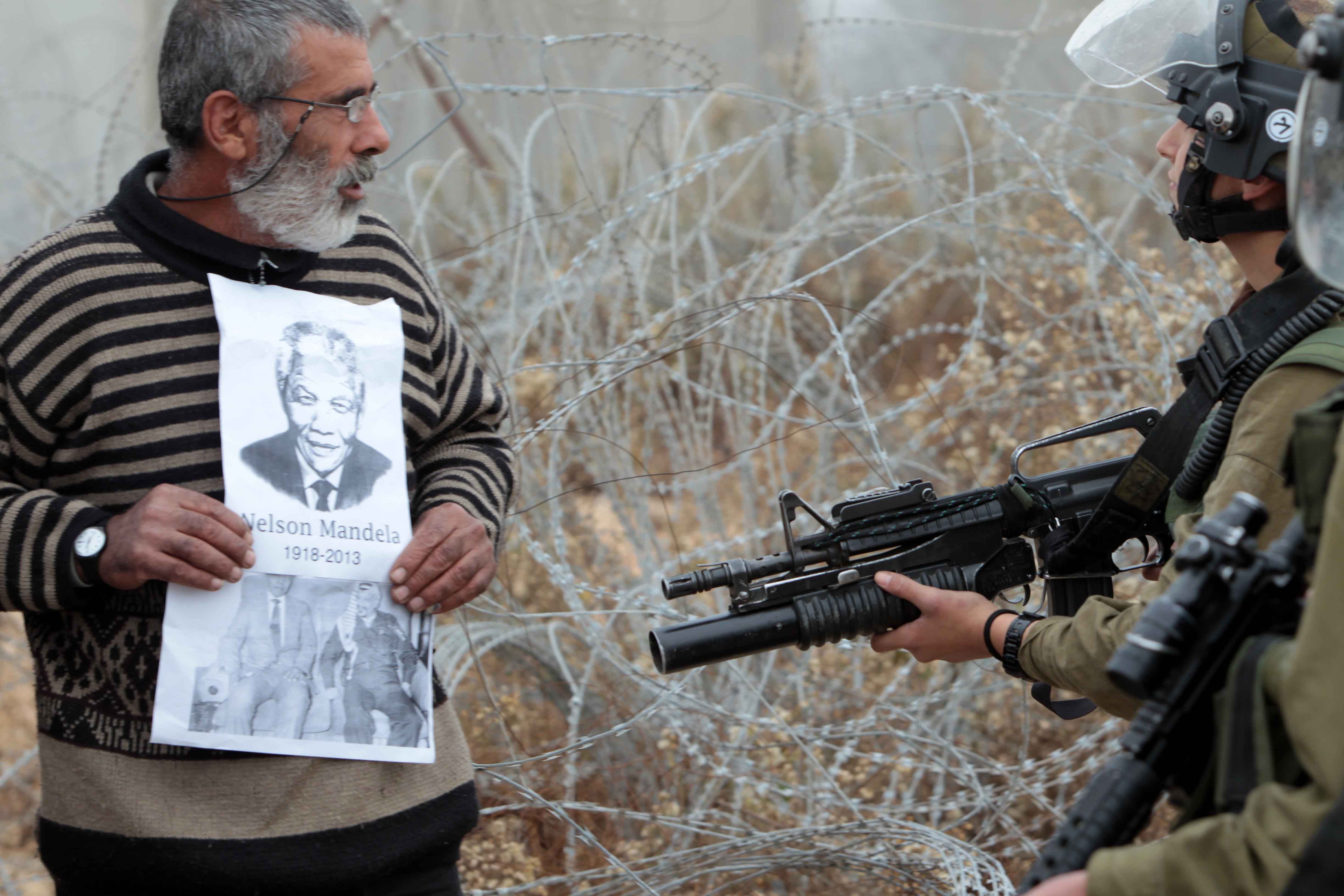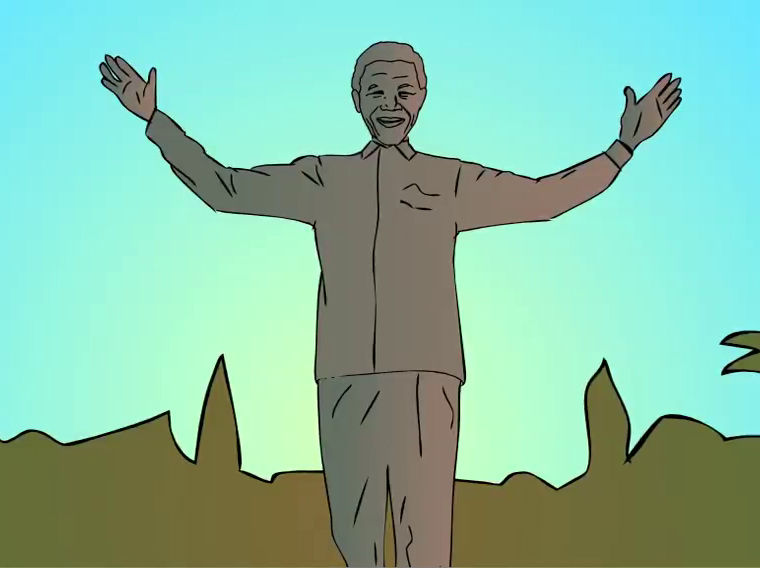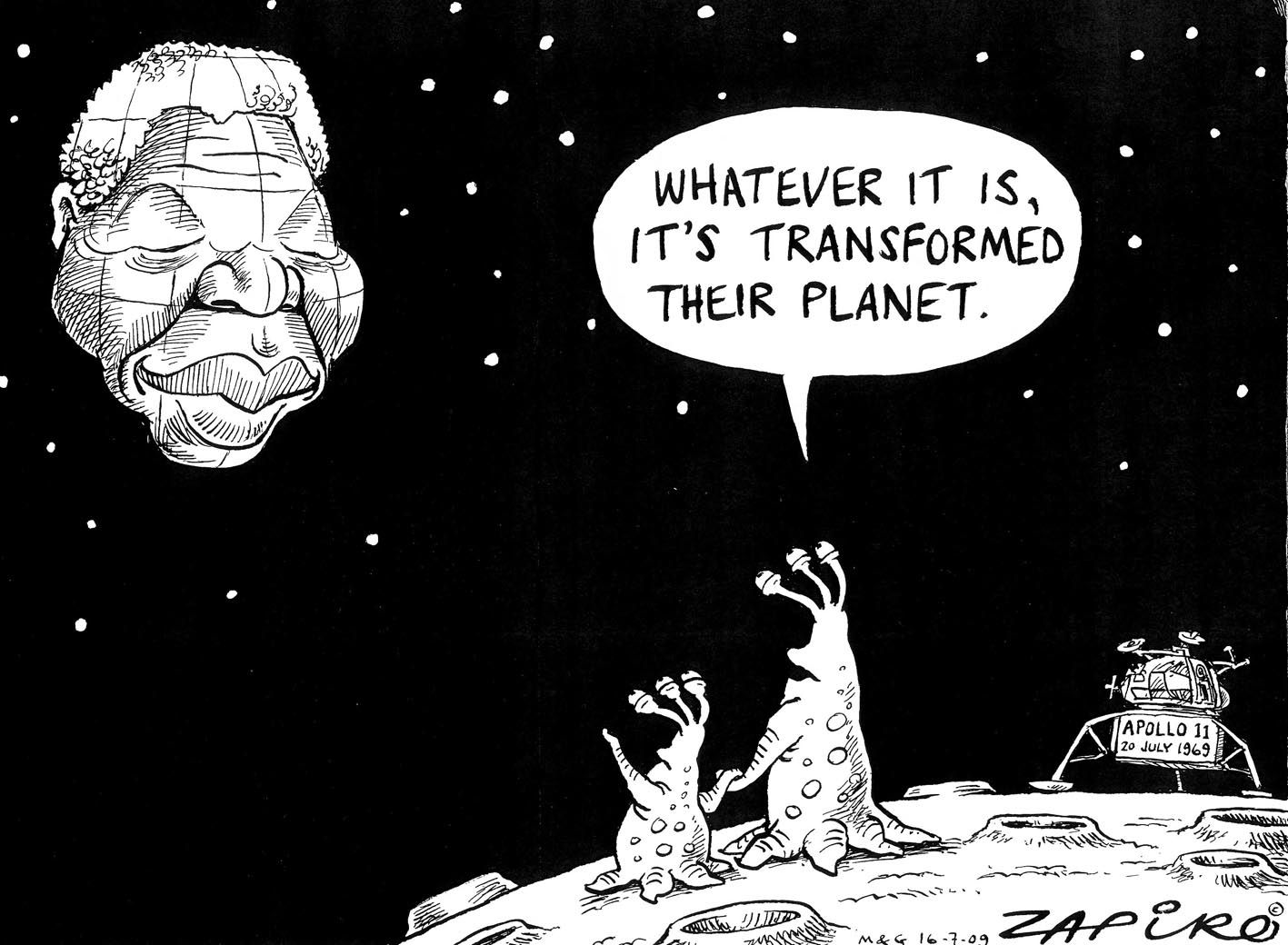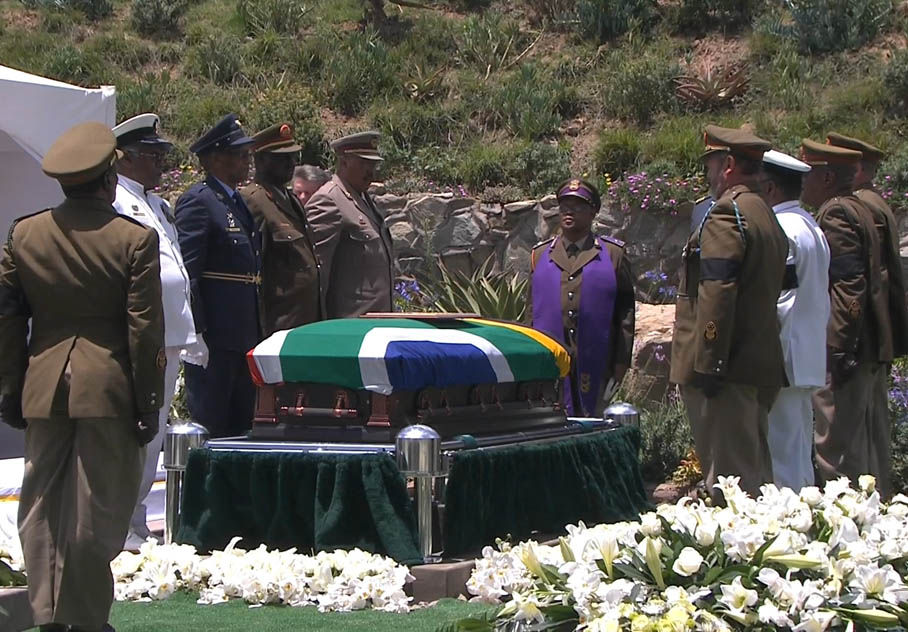
The world pays tribute to Mandela (slideshow)
As South Africans come to terms with the loss of former president Nelson Mandela, the rest of the world bids farewell to Madiba.

Pimples: Saving Madiba's rabbit (video)
Gwede, Mac and Blade try their best to stop the rabbit from whispering in Mandela's ear. But the elusive animal has some tricks up its sleeve.

Zapiro's best Madiba cartoons (slideshow)
From his toughest moments to his most triumphant, Madiba has been an inspiration. Here are some of our favourite Zapiro cartoons about him from 1994 to 2013.

Mandela: SA's greatest son laid to rest (slideshow)
The world watched as Nelson Mandela was finally laid to rest in his hometown of Qunu following a dignified and moving funeral ceremony on Sunday.

The public figure of Nelson Mandela has returned to Johannesburg and, specifically, to the places he inhabited in the 1950s, in Marco Cianfanelli’s newly unveiled sculpture, Shadow Boxing, which towers above Fox Street, Ferreirasdorp. It has been placed between Chancellor House and the Johannesburg Magistrate’s Court, a route a young Mandela must have walked many times.
Chancellor House, which has recently been renovated, once housed Mandela and Tambo Attorneys, the first black law practice in Johannesburg. Today, it houses a museum recording that history, the contents of which are, unusually, displayed in the windows for passers-by to view.
One of the exhibits is a photograph of Nelson Mandela, the boxer, sparring with Jerry Moloi on the rooftop of the South African Associated Newspapers building in downtown Johannesburg. It was this image, captured by Drum photographer Bob Gosani in 1952, that inspired Cianfanelli’s Shadow Boxing.
“The idea of boxing is a great metaphor [for] the legal system,” says Cianfanelli. Writing about boxing, Mandela said: “I did not enjoy the violence of boxing so much as the science of it. I was intrigued by how one moved one’s body to protect oneself, how one used a strategy both to attack and retreat, how one paced oneself over a match.”
Mandela was to spend much time in court, both as an attorney and as an accused and, in the boxer’s stance, the sculpture conveys both defensive power and the possibility of a powerful strike.
Measuring close to 6m high, Shadow Boxing stands atop a concrete plinth with Mandela’s words etched on it: “In the ring, rank, age, colour, and wealth are irrelevant.”
The statue is made up of layers of painted metal sheets, creating a 3D effect. Cianfanelli says: “The sculpture is a tribute to a black-and-white grayscale photo. I decided to add red, to make it more pronounced and also to link to the colour used on Chancellor House.”
With its graphic treatment and bold shades, the sculpture calls to mind the famous Barack Obama poster image created by artist Shepard Fairey for the 2008 presidential campaign. Cianfanelli says: “It’s a bit of a pop-play on Warhol’s gun-slinging Elvis Presley. It puts it in the vein of a populist icon.”
This is Cianfanelli’s second Mandela work and it is very different from the first, which is made up of a series of 50 steel columns that, viewed collectively, create a portrait of Mandela. The sculpture is in Howick, Kwazulu-Natal, where police captured Mandela in 1962 after he had been on the run for months.
Talking of what it’s like to work on Mandela, Cianfanelli says: “I never imagined I would be doing sculptures of him. It’s just pure coincidence. There are so many images of him, and so many poor sculptures.”
The sculpture also commemorates the life and work of Bob Gosani and there’s something delightful about Cianfanelli having worked “with” Gosani to create it. It is truly a “public” artwork, inspiring both awe and response, with passers-by, whether adults or children, stopping to pose proudly for photos with it.
“The uniqueness of the piece — the character of the boxer rather than the political figure, which was also part of his persona — has made me very proud,” says Cianfanelli.

